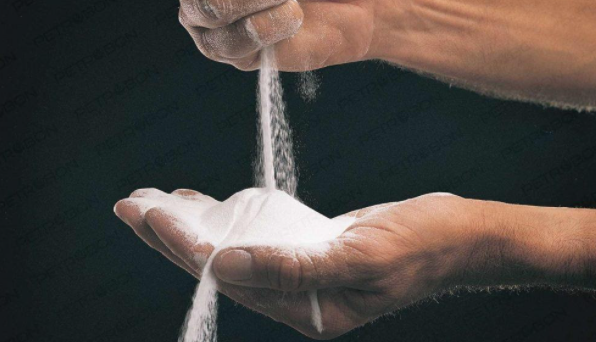PVC Pipes replace traditional building materials such as wood, metal, concrete, and clay in various applications.
Because of its versatility, cost-effectiveness, and long record of accomplishment of usage, it is a crucial polymer for the building industry, accounting for 70% of Asian PVC developments since 2006.
Polyvinyl Chloride (PVC or Vinyl) is a high-strength thermoplastic polymer. It is widely applicable in pipelines, medical equipment, wire and cable insulation, and the list goes on. It is the world’s third most common synthetic plastic polymer. So, what exactly is PVC? How PVC pipe fittings are done? Get in-depth technical information on Polyvinyl Chloride and its properties.
What is Polyvinyl Chloride?
PVC stands for Polyvinyl Chloride. PVC pipes are plastic materials with the chemical formula CH2=CHCl.
Plastic refers to a wide range of synthetic or semi-synthetic polymerization products (i.e. long-chain carbon-based “organic” molecules) whose name refers to the fact that they are malleable or plastic in their semi-liquid state.
In addition, PVC is a thermoplastic substance. We can melt these thermoplastic materials by applying heat at a certain temperature and then cooling them to harden again.
What Are The Available PVC Forms?
- Flexible or Plasticized PVC Pipes (Density: 1.1-1.35 g/cm3): The addition of suitable plasticizers to PVC lowers the crystallinity and results in flexible PVC. These plasticizers function as lubricants, resulting in transparent and more flexible plastic. PVC-P is another name for this kind of PVC.
- Rigid PVC (Density: 1.3-1.45 g/cm3): It is a stiff and cost-effective plastic with good resistance to impact, water, weather, chemicals, and corrosive conditions. This PVC has different names, such as UPVC, PVC-U, or uPVC.
- Chlorinated Polyvinyl Chloride (Density: 1.38 g/cm3): It is often known as perchlorovinyl, made by chlorinating PVC resin. A high chlorine level ensures long-term durability, chemical stability, and flame retardancy. CPVC can handle an improved temperature range.
- PVC-O, or Molecularly Oriented PVC (Density: 1.35 – 1.46kg/dm3): It is a rearranging amorphous structure of PVC-U into a layered structure. PVC biaxially orientated offers improved physical properties (stiffness, fatigue resistance, lightweight, etc.).
- PVC-M, or modified PVC (Density: 1.47g/cm3). This PVC is a PVC alloy created by modifying chemicals, resulting in improved toughness and impact qualities.
How Is Polyvinyl Chloride Made?
The primary raw ingredients for PVC are salt and oil. The electrolysis of sodium chloride salt produces chlorine. That is why we see all its factories near natural salt supplies.
When manufacturers electrolysis saltwater, they get chlorine. Then they mix it with ethylene derived from oil. Then it is followed by vinyl chloride monomer transformation at extremely high temperatures to obtain ethylene dichloride. Polymerization of these monomer molecules results in the formation of polyvinyl chloride resin.
PVCU is commonly applicable in stiff PVC, such as window frames (“unplasticised “). Flexible PVC, on the other hand, is the result of plasticizers like phthalates.
Furthermore, when exposed to visible or UV light, pure poly-chloromethane becomes unstable. Antioxidants mitigate this disadvantage and make it suitable for a variety of applications. Other ingredients include:
- Anti-Oxidants & Other Stabilizers. It reduces the rate at which the polymer destruction occurs by adding oxygen, heat, visible light, or ultraviolet radiation.
- Compatibilizers. It mixes PVC with other polymers, which aids in plastic recycling.
- Flame-Retardants. It reduces the plastic’s flammability.
- Pigments. It adds colour to the plastic
- Plasticisers. It makes plastic that is flexible and controllable
- Impact Modifiers. It absorbs stress without causing damage
- Fillers. It is low-cost, inert compound that just add volume to the plastic
Benefits Of Using PVC Pipe Fittings
- PVC has several food contacts and medicinal approvals in Asia.
- PVC is simple to work with, durable, robust, and lightweight.
- PVC Pipe Fittings require less energy to manufacture than any other commodity plastic.
- PVC consumes less primary energy than other materials.
- Its great clarity and good organoleptic qualities (no taint transfer to food) make it equally suitable for short-term applications such as specialised packaging.
- PVC has a minimal carbon footprint; the infographic below compares the CO2 effect of PVC to that of other materials.
To Sum Up!
The primary raw materials for PVC are salt and oil. The electrolysis of sodium chloride salt produces chlorine.
PVC is available in a wide range of consumer items. Vinyl record manufacture was one of its first mass-market consumer applications. Wallcovering, greenhouses, home playgrounds, foam and other toys, bespoke truck toppers (tarpaulins), ceiling tiles, and other types of interior cladding are more examples that are modern.





























